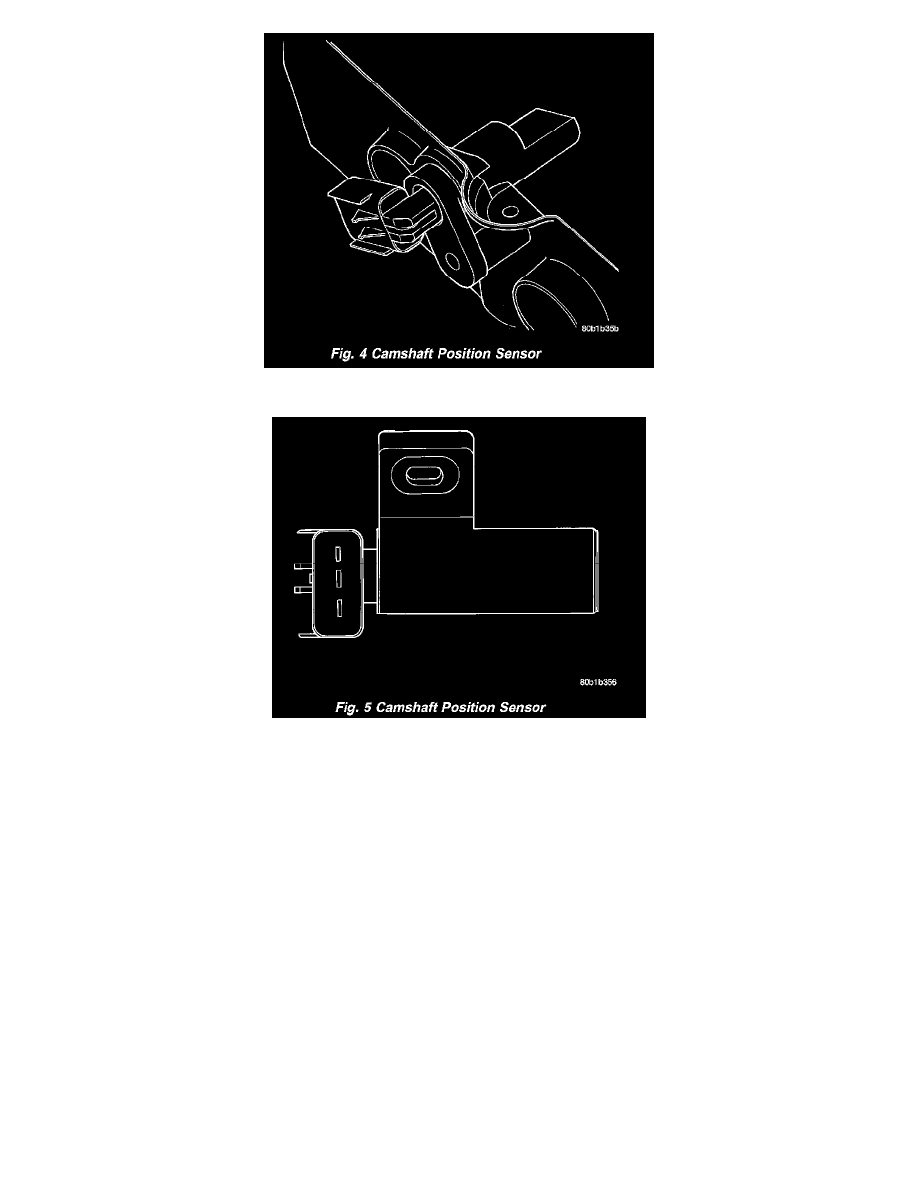Concorde V6-3.5L VIN G (2002)

Fig. 4 Camshaft Position Sensor - 2.7L
Fig. 5 Camshaft Position Sensor - 3.5L
The camshaft position sensor, or, contains a hall effect device that provide cylinder identification to the Powertrain Control Module (PCM). The sensor
generates pulses as groups of notches on the camshaft sprocket pass underneath it. The PCM keeps track of crankshaft rotation and identifies each
cylinder by the pulses generated by the notches on the camshaft sprocket. Crankshaft pulses follow each group of camshaft pulses.
When metal aligns with the sensor, voltage goes low (less than 0.3 volts). When a notch aligns with the sensor, voltage spikes high (5.0 volts). As a
group of notches pass under the sensor, the voltage switches from low (metal) to high (notch) then back to low. The number of notches determine the
amount of pulses. If available, an oscilloscope or DRB III PEP Module can display the square wave patterns of each timing event.
